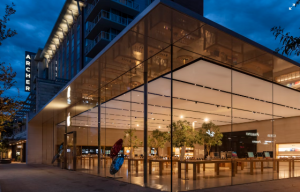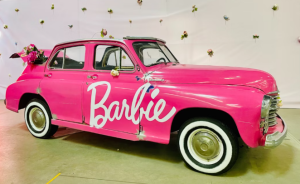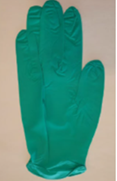Which of these colors is a registered trademark?
a. Green Medical Gloves
b. Chocolate Ice-cream Brown
c. Barbie Pink Doll Packaging
d. Cheerio Yellow Cereal Box
e. All of the Above
f. Colors Cannot be Trademarks
Answer: c. Barbie Pink!
Yep, a color can function as a trademark. But here’s the catch: most attempts to claim a color don’t work. Courts are very strict. Why? Because to protect a color with a trademark, you have to prove that consumers see the color and think of your brand alone. Those is a high hurdle to clear. Most companies can’t make it. Read on to find out more.
Trademark Basics
So, what exactly is a trademark?
A trademark is anything that tells consumers where a product comes from. It could be a word (like “Nike”), a symbol (like the swoosh), or even a slogan (“Just Do It”).
The purpose of a trademark is to prevent confusion amongst consumers. When you see the swoosh, you know the shoes are made by Nike. Not Adidas or Reebok.
To qualify for protection, a trademark has to meet two basic requirements. The first is distinctiveness. A trademark must be able to tell consumers where the product comes from. For example, the word “Nike” is distinctive. A swoosh logo is distinctive. Consumers associate these with the Nike company. The words like “gym shoes” is not distinctive. They do not tell a consumer what the source of gym shoes is.
They merely describe the product itself.
Next, the trademark must be used on a good or service in commerce. You can’t just hold rights to a mark without putting it on a good or service in the market. For example, Apple uses its bitten-apple logo on phones and stores. Thus, that logo is used on a good or service in commerce, making it a valid trademark.
Trade Dress as a Trademark
Trade dress is a type of trademark. Instead of a word or logo, it protects the overall look and feel of a product or its packaging. Think of the curvy Coca-Cola bottle or the Apple Store’s minimalist glass design. Even colors can be trade dress.

Trade dress generally falls into two categories. Product design trade dress covers the design or shape of the product itself. For example, the fish shape of the popular cheddar snack ‘Goldfish.’ Product packaging trade dress protects how a product is presented or wrapped. Think of the white boxed packaging of Apple products.
Applying Trade Dress Criteria to Color Marks
First, similar to a normal trademark analysis, colors must be distinctive. In many cases for color trade dress, proving distinctiveness requires the color to have “secondary meaning.” i.e. consumers must see the color and associate it with a single company. For example, with UPS brown, people don’t just see a brown truck. They think of UPS, the delivery service. Thus, the UPS brown is distinctive due to the consumer association of the color with the source. For product design in particular, the Supreme Court held that color is never inherently distinctive and that secondary meaning must always be shown for a color trade dress to be protectable.

The color also must be used in commerce on a product or service. Barbie Pink is a great example for a trade dress for the doll/toy industry. Mattel splashes that hot pink across boxes, ads, and marketing campaigns. It signals the manufacturer of “Barbie” to consumers.
Lastly, a color can’t be functional. This is a requirement specific to trade dress, but not words or logos. This has two angles.
First, there is utilitarian functionality: if the color makes the product work better, i.e. the color is useful, that is barred from protection. For example, using the color black for solar panels might be functional because it absorbs heat. Brown for chocolate ice cream can also be functional, if it contains cacao that naturally makes the ice cream brown.
Next, there is aesthetic functionality: if the color gives a company an unfair edge because consumers expect it and would not accept other colors. Back to our chocolate ice-cream example. Imagine if only one company could make brown-colored chocolate ice cream. That would be unfair, because consumers expect chocolate ice cream to be brown. Letting one company own that shade would block all competitors unfairly. If the color fails the functionality test, then there is no valid trade dress.
The Case of the Green Gloves
If you’ve ever been in a science lab or hospital, you’ve probably seen boxes of green gloves stacked on a shelf. I remember pulling on green gloves during my engineering research days without giving them a second thought. They were just one of many options in the supply closet. And that’s exactly what made Medisafe’s case difficult.

In In re PT Medisafe Technologies (Federal Circuit, April 29, 2025), Medisafe tried to trademark a dark green shade (Pantone 3285c) for its medical gloves. Its argument was that this particular color green was distinctive enough to identify Medisafe as the source in the science/laboratory field.
The flaw for Medisafe was distinctiveness. Doctors and patients didn’t see the green color on the gloves and think “Medisafe,” or even one specific source. They simply thought “medical gloves.” Because the shade was so common for medical gloves, consumers didn’t associate the green shade with Medisafe’s gloves and in fact could never develop the secondary meaning needed to qualify as trade dress. Although Medisafe tried to submit survey evidence that some connected the color with MediSafe, the court rejected the small survey of existing customers as flawed. Moreover, the trademark examiner had over twenty examples of websites of other parties selling similar goods with the same color, underscoring that the color was not distinctive. Technically the Federal Circuit was applying a test for whether a word is not distinctive since it is the “generic” name for a class of goods (s.a. apple for the fruit you eat) to include color as noted by Dentons. But, the bottom line is still that colors can lack distinctiveness if too common.
It’s the same reason why brown-colored chocolate ice cream will never be distinctive. Some colors are so tied to the product itself, or so widely used, that no one company can claim them as a trademark and thus exclude competitors from using them. Only when a shade becomes unmistakably linked to a brand in its particular field of goods and services does it rise to the level of protectable trade dress.
Now look around at the colors you see every day. The red of a soda can. The purple of a candy wrapper. The blue of a shopping bag. Do you think those colors are just decoration? Or do they work as trade dress?

Adelyn Schmidt
Associate Blogger
Loyola University Chicago Law School, J.D. 2027
